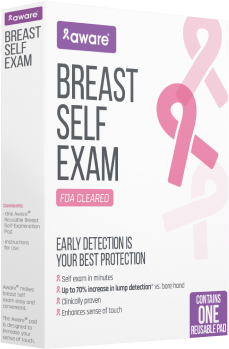

Myths and facts about the risk of developing breast cancer*
Myth: Breast cancer is preventable
Fact: There is no known way to prevent breast cancer, and the cause of the disease has not been determined. Early detection followed by prompt treatment offers the best chance to treat breast cancer successfully.
Myth: Only women with known "risk factors" get breast cancer
Fact: Over 70 percent of women diagnosed with breast cancer have no identifiable “risk factors.” All women are at risk, and risk increases with age.
Myth: Only women with a family history of breast cancer are at risk
Fact: The majority of women with breast cancer have no family history of the disease. A woman whose mother, sister, daughter or grandmother had breast cancer has an increased risk of developing the disease. These women should be screened earlier and possibly more often.
Myth: Breast cancer is contagious
Fact: Cancer is not a communicable disease. It results from uncontrolled growth of cells in a person’s own body. These changes cannot affect other people’s cells.
Myth: Small breasted women cannot get breast cancer
Fact: The amount of breast tissue a woman has does not affect her risk of developing breast cancer.
Myth: Breast-feeding causes breast cancer
Fact: No studies have shown that breast feeding causes breast cancer. Some studies have even suggested that breast feeding may reduce a woman’s risk of developing the disease. A woman who breast feeds her children can still get breast cancer.
Myth: Only white women get breast cancer
Fact: Every woman is at risk for breast cancer, regardless of race or socioeconomic status. African-American women have a higher mortality rate from breast cancer than white women.
Myth: Knowing you have the BRCA1 gene means you can prevent breast cancer
Fact: Nothing can prevent breast cancer. About five percent of women in the United States who have had breast cancer are thought to carry the mutant BRCA1 gene. Women who carry this gene have an 85 percent lifetime risk of developing breast cancer. Once they are identified, they will need to be closely monitored by their doctors.
Myth: Prophylactic mastectomies protect against breast cancer in high risk women
Fact: In a prophylactic mastectomy the surgeon removes breasts with no cancer, however, some of a woman’s breast tissue remains. Breast tissue extends up towards the neck, the armpits, and the chest wall. Risk of developing breast cancer remains as long as there is breast tissue in the body.
Myths and facts about breast cancer follow-up care and survival
Myth: A diagnosis of breast cancer is a death sentence
Fact: No! More than 90 percent of women who find and treat their breast cancer early are cancer free at five years.
Myth: Breast cancer is curable
Fact: A breast cancer survivor always lives with the possibility of recurrence. Data has shown that breast cancer can recur as long as twenty years after diagnosis. For this reason, survivors should continue to have regular mammograms and see their doctors for regular check-ups.
Myth: Breast reconstruction can only be performed at the time of mastectomy
Fact: Breast reconstruction can be done at the same time as mastectomy or in the future. It is up to the woman to decide. However, if she decides to consider reconstruction at a later time, she should discuss this with her surgeon before her mastectomy.
Myth: Lymphadema is a likely side-effect of breast cancer surgery and treatment
Fact: Lymphadema (swelling of the arm) is a possible side effect of axillary dissection and/or radiotherapy. It is often preventable by following some simple guidelines such as avoiding injections or taking blood pressure in the affected limb and refraining from heavy lifting and repetitive movements. For women affected there are a number of different therapies available to help relieve the discomfort associated with this condition.
Myth: The more lymph nodes removed, the more impaired you will be
Fact: Most surgeons perform “Level One” axillary dissections, which involves removing a pad of tissue and lymph nodes under the arm. The number of nodes in this pad differs from woman to woman. The number of nodes examined is generally at least ten, and does not affect a woman’s recovery. If a more extensive dissection is performed, a woman’s risk for side effects is increased.
Myth: A breast cancer diagnosis means your intimate relationships are in jeopardy
Fact: Pleasurable intimate experiences between a woman and her partner are always possible, regardless of physical problems or medical history. Sexuality is an important part of everyday life, and this does not change with a diagnosis of breast cancer. Open communication with your partner about your relationship is very important. A woman should not hesitate to discuss the topic of sexuality with her doctor or other member of the health care team.
Myth: Women diagnosed with breast cancer can never have children
Fact: Chemotherapy sometimes, not always, causes infertility in pre-menopausal women. Fertility in women who do not have chemotherapy is unaffected by breast cancer. Doctors generally recommend that women wait at least two to three years after initial diagnosis to become pregnant, because the risk of recurrence is greatest then.
*The above data comes from the ©National Alliance of Breast Cancer Organizations (NABCO), The American Cancer Society, The National Cancer Institute and The Y-Me National Breast Cancer Organization. These organizations make no explicit or implied endorsement to this website or warranty its accuracy.
Aware ®
The Aware® Pad is an innovative, CE-marked medical device designed specifically to help you detect the subtlest changes in your breast tissue, enhancing the effectiveness of breast self-examination.

